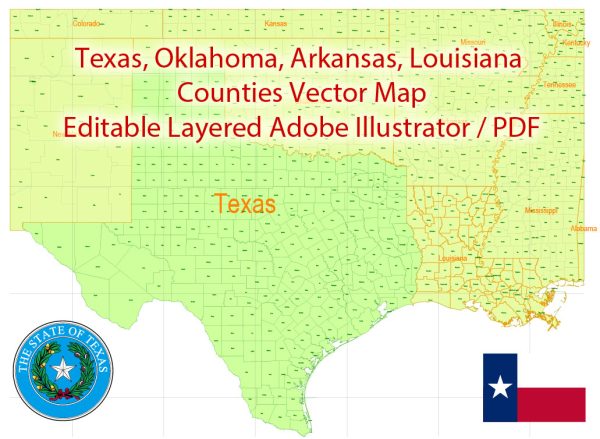The urban development history of Texas and Louisiana is rich and diverse, shaped by a combination of factors including geography, economy, culture, and historical events. While each state has its unique story, they share some common themes in their trajectory of urbanization.
Texas:
- Early Settlements:
- Texas has a long history of human habitation, with indigenous peoples present for thousands of years.
- Spanish explorers and missionaries established settlements in the 18th century, contributing to the region’s cultural diversity.
- Mexican and Republic of Texas Period:
- The Mexican era and the period of the Republic of Texas saw the establishment of towns and communities, often around missions and military outposts.
- Houston, founded in 1836, became the capital of the Republic of Texas, and its early growth was fueled by its strategic location.
- Railroads and Industrialization:
- The arrival of railroads in the late 19th century played a crucial role in connecting cities and promoting economic development.
- Cities like Dallas, Fort Worth, and San Antonio grew as transportation hubs and centers of commerce.
- Oil Boom:
- The discovery of oil in places like Spindletop in 1901 led to an economic boom, with cities such as Houston and Dallas benefiting from the oil industry’s growth.
- Post-World War II Suburbanization:
- Like many other states, Texas experienced significant suburbanization after World War II, driven by factors such as the GI Bill, highway construction, and a growing middle class.
- Diverse Urban Landscape:
- Texas cities showcase a diverse urban landscape, from the high-tech industry in Austin to the oil and energy sectors in Houston and the cultural vibrancy of San Antonio.
Louisiana:
- French and Spanish Colonial Influence:
- Louisiana’s urban history is deeply influenced by its French and Spanish colonial past. New Orleans, founded in 1718, is a prime example of this influence.
- Port Cities and Trade:
- New Orleans emerged as a major port city due to its location along the Mississippi River, becoming a hub for trade and cultural exchange.
- Antebellum Plantation Economy:
- The plantation economy of the antebellum period shaped the development of cities and towns, with Baton Rouge and Shreveport playing key roles.
- Post-Civil War Reconstruction:
- After the Civil War, New Orleans and other cities underwent reconstruction, with economic changes and the emergence of a more diversified economy.
- 20th Century Industrialization:
- The 20th century saw industrialization and the growth of cities like Baton Rouge, which became a center for petrochemical and manufacturing industries.
- Cultural Heritage and Tourism:
- Louisiana’s cities, especially New Orleans, are known for their rich cultural heritage, including music, cuisine, and festivals, attracting tourists from around the world.
Both Texas and Louisiana have experienced significant population growth, economic shifts, and cultural developments, contributing to the dynamic urban landscapes seen in the present day. The cities in these states continue to evolve, facing challenges and embracing opportunities for sustainable and inclusive urban development.


 Author: Kirill Shrayber, Ph.D.
Author: Kirill Shrayber, Ph.D.